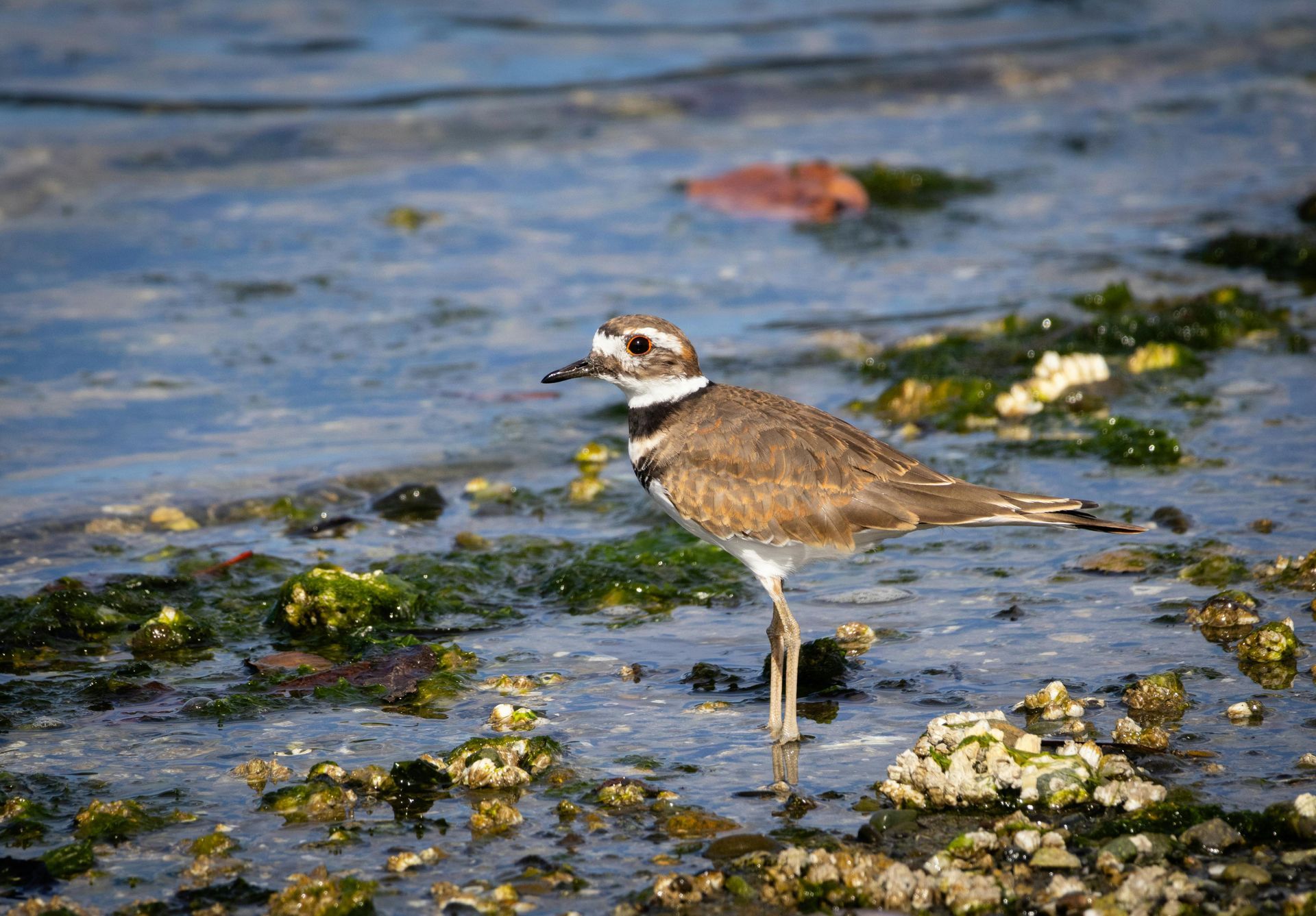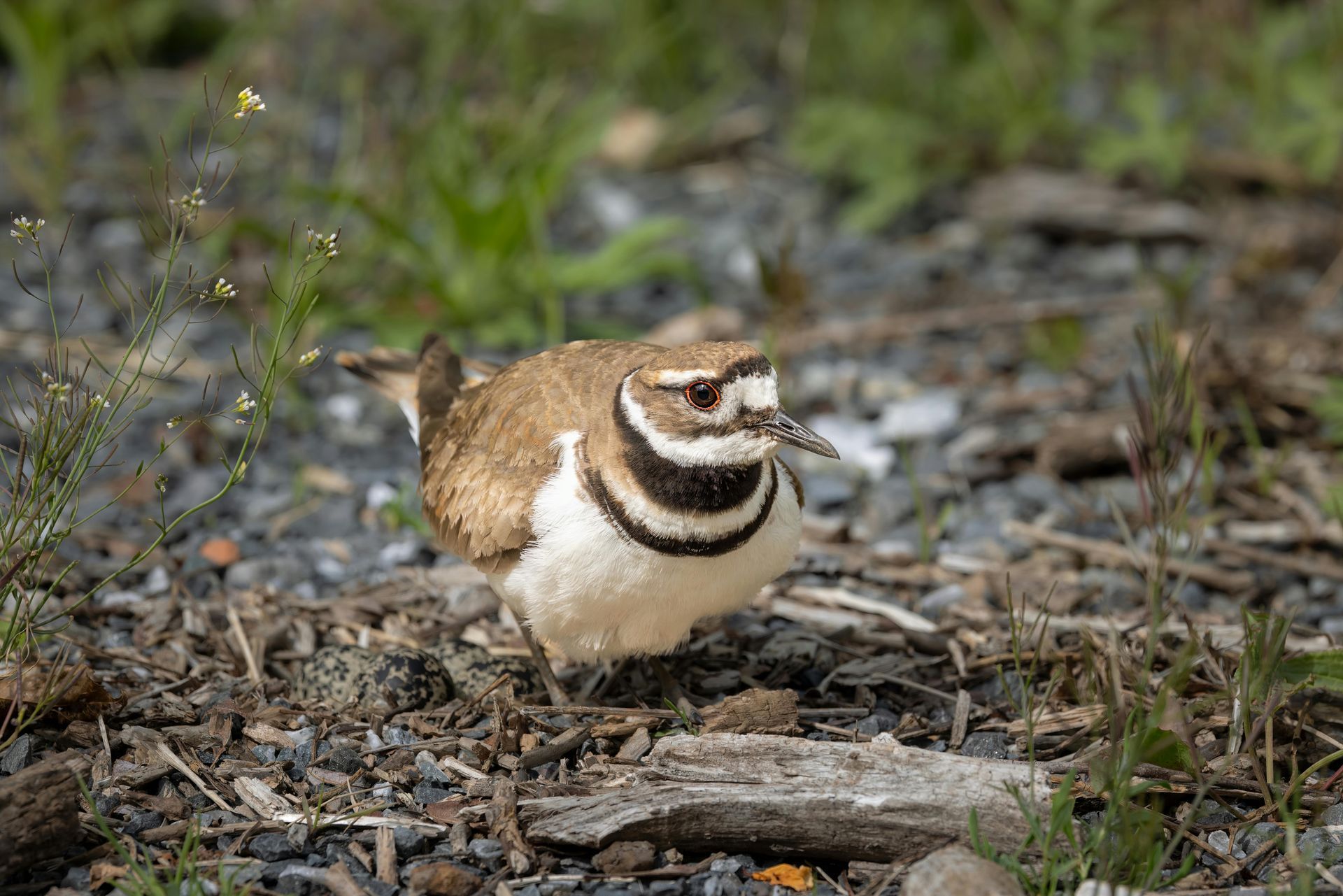Killdeer are a medium-sized plover known for their distinctive call, striking plumage, and ground-nesting habits. Found across North America, these shorebirds thrive in diverse habitats, including fields, riverbanks, wetlands, and even suburban areas like golf courses and parking lots. Killdeer play an important role in ecosystems by controlling insect populations.
Killdeer typically measure around 8-11 inches in length with a wingspan of 18-24 inches. Their plumage features a brown back, white underparts, and two black breast bands. Their red-orange eyes and long, slender legs make them easy to identify. Unlike many shorebirds, Killdeer are often seen far from water, foraging for insects, worms, and small crustaceans on open ground.
During the breeding season, Killdeer lay their eggs in shallow scrapes on the ground, often lined with pebbles or plant material. To protect their eggs, they use a well-known “broken-wing” display, feigning injury to lure predators away from the nest. Both parents share incubation duties and care for the young, which are precocial and able to walk shortly after hatching.
Natural predators include foxes, snakes, raccoons, and birds of prey. Human-related threats such as habitat loss, vehicle collisions, and disturbance pose significant risks to Killdeer populations. Despite these challenges, they have adapted well to human-altered landscapes.

For your safety and the well-being of wildlife, please observe animals from a distance and avoid touching or disturbing them. If you encounter an animal that appears injured or in distress, contact a licensed wildlife rescue organization for guidance before intervening.
Found An Animal? Not sure how to help a wild animal in need? Learn when to step in, who to call, and how to help safely.
Did You Know?
- Killdeer are named for their loud, high-pitched call that sounds like “kill-deer, kill-deer.”
- Their “broken-wing” display is one of the most famous examples of bird distraction behavior.
- The Killdeer’s broken-wing act leads predators away from a nest, but doesn’t keep cows or horses from stepping on eggs. To guard against large hoofed animals, the Killdeer uses a quite different display, fluffing itself up, displaying its tail over its head, and running at the beast to attempt to make it change its path.
- Unlike many shorebirds, Killdeer prefer dry, open areas far from water.
- Killdeer chicks can run and forage for food just hours after hatching.
- They have been observed pretending to incubate non-existent eggs to confuse predators.
- Killdeer nests are often built on gravel rooftops and driveways, making them vulnerable to human activity.
- Killdeer can have multiple broods in a single breeding season if conditions are favorable.
- They are migratory in northern regions but remain year-round residents in milder climates.
Problems Faced In The Wild
- Habitat Loss: Urban development reduces nesting and foraging areas.
- Human Disturbance: Recreational activities can inadvertently harm ground nests and chicks.
- Vehicle Collisions: Nests built near roads and parking lots increase the risk of being struck by vehicles.
- Predation: Eggs and chicks are vulnerable to predators such as foxes, raccoons, and crows.
- Climate Change: Altered weather patterns affect food availability and breeding success.
- Competition for Resources: Invasive species can outcompete Killdeer for prime nesting and foraging areas.
Tips For Cohabitation
- Protect Ground Nests: Keep an eye out for Killdeer nests and avoid disturbing them.
- Limit Off-Road Vehicle Use: Avoid driving on beaches or open fields where Killdeer may be nesting.
- Provide Open Spaces: Maintain natural, open habitats to support Killdeer foraging and nesting.
- Educate Others: Share information about Killdeer behavior and how to protect ground-nesting birds.
- Reduce Predation Risks: Keep domestic pets away from nesting areas.
- Support Conservation Efforts: Participate in local programs that protect shorebird habitats.



